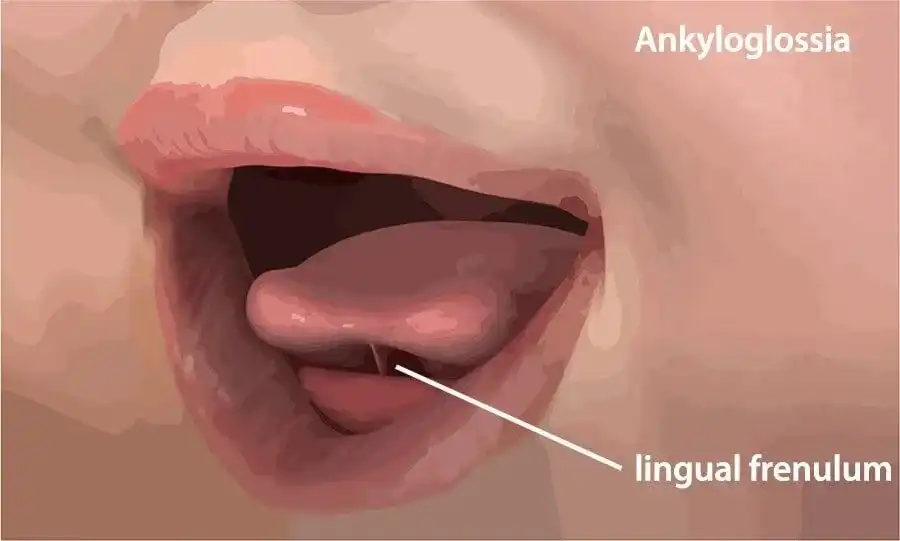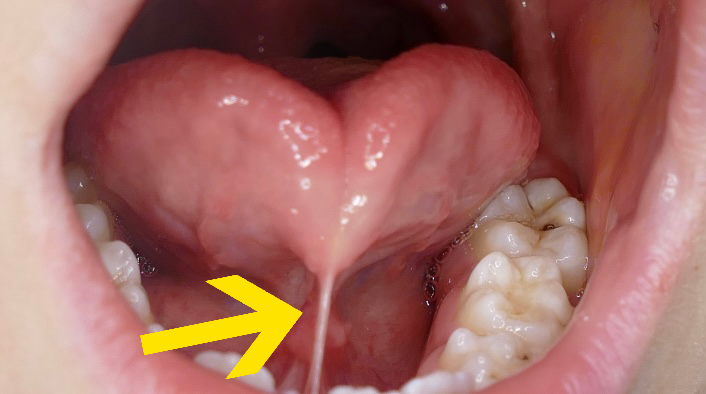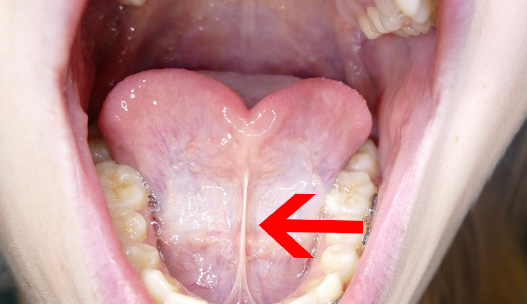Tongue-tie in Babies: A Guide for Parents


A baby tongue tie — aka “ankyloglossia” — is a condition that some infants are born with. Unfortunately, it can also make it really difficult for a baby to latch during nursing or bottle feeding. This can lead to a host of frustration for babies, nursing moms, and anybody who is trying to bottle feed an infant. Baby tongue ties can also lead to long-term complications too, like speech impediments and changes to the way your child’s facial bones develop.
The good news is that baby tongue tie treatment can be a fairly straightforward process, as long as you know where to turn for help.
What Is A Tongue-Tie (Ankyloglossia)


Some lingual frenums are loose enough to allow the tongue to move around. For babies, a “tongue tie” happens when the frenum is too tight and restricts your child's tongue’s movement. The frenum usually looks short, thick, or well pronounced. You might even be able to see that it attaches too close to the tip of the baby’s tongue. In severe cases, the tightness of this skin can cause the tip of your baby’s tongue to begin forming a cleft or pull at the tip.
Tongue-Tie Baby Symptoms
Aside from fussiness and difficulty nursing, it’s fairly easy to tell if your child has a posterior tongue-tie by looking in their mouth. If you’re a first-time parent, it might be a little harder since you have nothing to compare it to. What you’re looking for is that tight or pronounced frenum/frenulum (strip of skin) just under your baby’s tongue.
When most babies cry, their tongue is pronounced or lifted up where you can see underneath it. Yes, it’s heartbreaking, but it does make it easier for you as a parent to look for the symptoms of a baby tongue-tie.
If you can see that tight strip of skin and it appears like your baby’s tongue doesn’t lift up very high, or the skin is connected near the tip of the tongue — and you’re already experiencing feeding difficulties — your baby may have a tongue-tie.
Tongue-Tie Baby Causes
What actually causes a baby to develop a tongue tie? Ultimately it boils down to a tight strip of skin tissue that they’re born with. It’s similar to why some children also have lip ties. If the skin keeps the tongue restricted in place, they are no longer able to move their tongue to use it properly – which then leads to a host of other issues.
Bottom line, your child's tongue tie is caused when the tongue and attached lingual frenum just don’t develop properly. Fortunately, it’s possible to get effective, early treatment to reverse tongue ties in children, well before long-term side-effects ever have the chance to develop.
Tongue-Tie Diagnosis
Diagnosing a tongue-tie on babies is quick and easy, as long as your pediatrician or pediatric dentist are trained and educated in tongue ties. Those who are trained can know within just a couple of seconds whether your newborn has a tongue tie just by looking at it and checking its function. However, for professionals who are not specifically trained in tongue ties and/or are unaware of myofunctional education, it is possible they may tell parents it’s not a tie… when it really is.
When you call your doctor or dentist’s office or get there for the actual appointment, they’ll probably ask you several questions like:
- Is your baby having trouble nursing or drinking from a bottle?
- Is breastfeeding painful?
- Is there a gap between your child’s middle front teeth?
Or if it’s older toddlers or preschoolers, they may also ask:
- Does your child have difficulty speaking or forming certain sounds?
- Is it difficult to clean your child’s teeth?
- Have you noticed restricted movement in your child’s tongue?
At the same time, you’ll probably have some questions for your pediatric dentist or pediatrician about the diagnosis or treatment, including:
- Is my baby’s tongue-tie severe?
- Will my baby need treatment for a tongue-tie?
- Is the procedure surgical or performed with a laser?
- What will the recovery time be like?
- Is anesthesia necessary?
- Can the treatment be performed in the office?
The longest process of a tongue-tie diagnosis is trying to figure the issue out as a parent and knowing who to call. Once you visit a healthcare or dental professional, the clinical diagnostic process is practically instant. You’ll get the information you need on the same day and have a plan to treat the condition if it’s severe enough to require correction.
Treatment For Tongue-Tie
What Is A Frenectomy?
A frenectomy is where your doctor or dentist physically loosens the lingual frenum, or strip of skin just under your baby’s tongue. It can be completed with or without numbing medication and takes a matter of minutes to perform.
Depending on your provider’s experience, the severity of your baby’s tongue-tie, and the technology being used, a frenectomy can be completed with a sterile cutting tool (scalpel) or a soft tissue laser. Post-op discomfort depends on the several factors, including whether or not the laser is able to be used (generally the laser makes for less bleeding). Typically, your baby will go straight back to sucking on a bottle, pacifier, or breastfeeding after the procedure and be just fine.
What Is A Frenuloplasty?
A frenuloplasty is a less common tongue tie treatment for babies, since it’s usually intended for older children and adults (who can follow directions and move their tongue during the procedure).
A functional frenuloplasty (usually performed by an oral surgeon, pediatric dentist, dentist, or ENT) is where the child or adult suctions their tongue up to the palate multiple times during the procedure, then sutures are placed while they hold the suction. The sutures start dissolving around 3-5 days afterwards.
Tongue-Tie Risks & Complications
Tongue-ties in babies can cause some pretty serious issues and frustrations as your child grows up.
1. Breastfeeding Problems
A lot of new moms can be caught off-guard by how challenging nursing can be. Some babies take straight to breastfeeding, while others need a little help. A whole host of issues can come into play. Bottom line, your baby needs a good latch to be able to nurse effectively and comfortably. When your infant has a tongue tie, nursing can be painful and frustrating for baby and mom alike. Working with a lactation consultant can help you work through this new experience and determine if the frustration is due to a tongue tie. If it is, your baby will need tongue-tie treatment in order to be able to properly nurse. In addition, tongue-tie treatment will also help infants feed with a bottle, transition to solid foods, and improve sleep.
2. Speech Delays And Difficulties
We rely on our tongue to form different shapes for various letter sounds. As your child learns to speak, a tongue-tie can restrict their tongue’s movement and ability to form proper sounds. These warning signs may not become evident until your child gets a little older or starts school, when a speech therapist can screen them for a tongue tie. So, if you notice that your preschooler isn’t understandable to anyone else when they’re speaking, or their sounds seem “off”, it’s best to go ahead and rule out a tongue tie during their routine medical checkup or dental visit.
Getting treatment for a tongue tie as early as possible can help prevent speech delays and the need for extensive speech therapy in the future.
3. Poor Oral Hygiene
A tight tongue frenum restricts how well the tongue can move and where it lays against the teeth. If it’s too tight, you might find that it’s nearly impossible to clean the inside surfaces of your child’s lower teeth, much less get in there to help them floss. Those areas will be more prone to gingivitis and future tooth decay or gum disease.
4. Challenges With Other Oral Activities
There are a lot of things we take for common until we can’t do them. A child with a severe tongue-tie may never be able to do things like:
- Whistle
- Lick an ice cream cone
- Blow a bubble with their gum
- Play certain instruments or join the school choir
And that’s not to mention the self-esteem issues that come with speech impediments, or frustration caused by difficulty eating.
5. Facial Growth Patterns
The bones of our orofacial anatomy — including our mandible (lower jaw) and palate (roof of mouth)— can be impacted by muscle movements and oral habits. That’s why thumb-sucking is so detrimental to oral development. If your child has a tongue-tie, it could potentially impact the overall growth patterns of their mouth as they age.
When To See A Doctor
It’s important to take your baby to a medical or dental provider if you suspect that they have a tongue-tie. However, if your baby is having difficulty feeding or latching, it’s best to see your pediatrician, dentist and/or lactation consultant as soon as possible. They can confirm whether your baby has a tongue-tie or if their fussiness is due to something else.
If your baby is having issues making it through their feedings and you’re fairly certain that they have a tongue-tie, it can be helpful to schedule a brief consultation with your family’s dentist. A dentist can provide both a diagnosis as well as treatment for the tongue-tie in most cases. While not all dentists offer frenectomy treatment, many do, or they can at least tell you where to go to get a frenectomy for your child.
Pediatricians or lactation consultants will usually refer you to a dentist or even an ENT for the treatment.
Baby Tongue-Tie Overview
A baby tongue-tie (ankyloglossia) is frustrating for newborns and parents alike. A severe tongue-tie can prevent your baby from being able to feed properly or nurse well; it can even cause pain for nursing moms. Fortunately, baby tongue-ties are fairly easy to diagnose with the help of your pediatrician, family dentist, pediatric dentist, or lactation consultant. In most cases, treatment is quick and the benefits last a lifetime. In some cases, bodywork for tightness and/or myofunctional therapy will also be needed for weak tongues. So, to find out if your newborn has a tongue-tie, it’s definitely worth it to call your dentist or pediatrician ASAP for their input.

Make your inbox smile!
Subscribe






